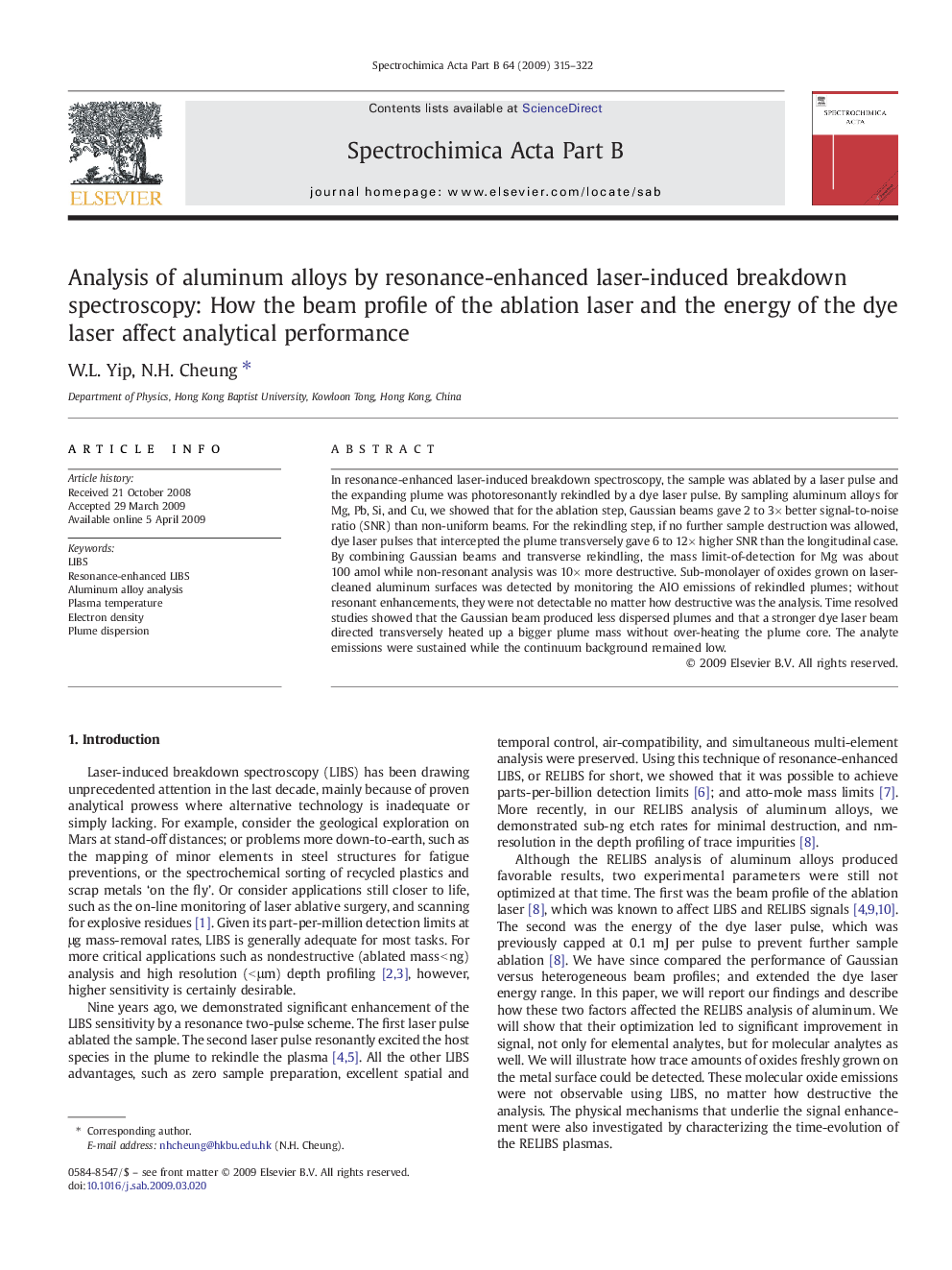| کد مقاله | کد نشریه | سال انتشار | مقاله انگلیسی | نسخه تمام متن |
|---|---|---|---|---|
| 1240395 | 969119 | 2009 | 8 صفحه PDF | دانلود رایگان |

In resonance-enhanced laser-induced breakdown spectroscopy, the sample was ablated by a laser pulse and the expanding plume was photoresonantly rekindled by a dye laser pulse. By sampling aluminum alloys for Mg, Pb, Si, and Cu, we showed that for the ablation step, Gaussian beams gave 2 to 3× better signal-to-noise ratio (SNR) than non-uniform beams. For the rekindling step, if no further sample destruction was allowed, dye laser pulses that intercepted the plume transversely gave 6 to 12× higher SNR than the longitudinal case. By combining Gaussian beams and transverse rekindling, the mass limit-of-detection for Mg was about 100 amol while non-resonant analysis was 10× more destructive. Sub-monolayer of oxides grown on laser-cleaned aluminum surfaces was detected by monitoring the AlO emissions of rekindled plumes; without resonant enhancements, they were not detectable no matter how destructive was the analysis. Time resolved studies showed that the Gaussian beam produced less dispersed plumes and that a stronger dye laser beam directed transversely heated up a bigger plume mass without over-heating the plume core. The analyte emissions were sustained while the continuum background remained low.
Journal: Spectrochimica Acta Part B: Atomic Spectroscopy - Volume 64, Issue 4, April 2009, Pages 315–322